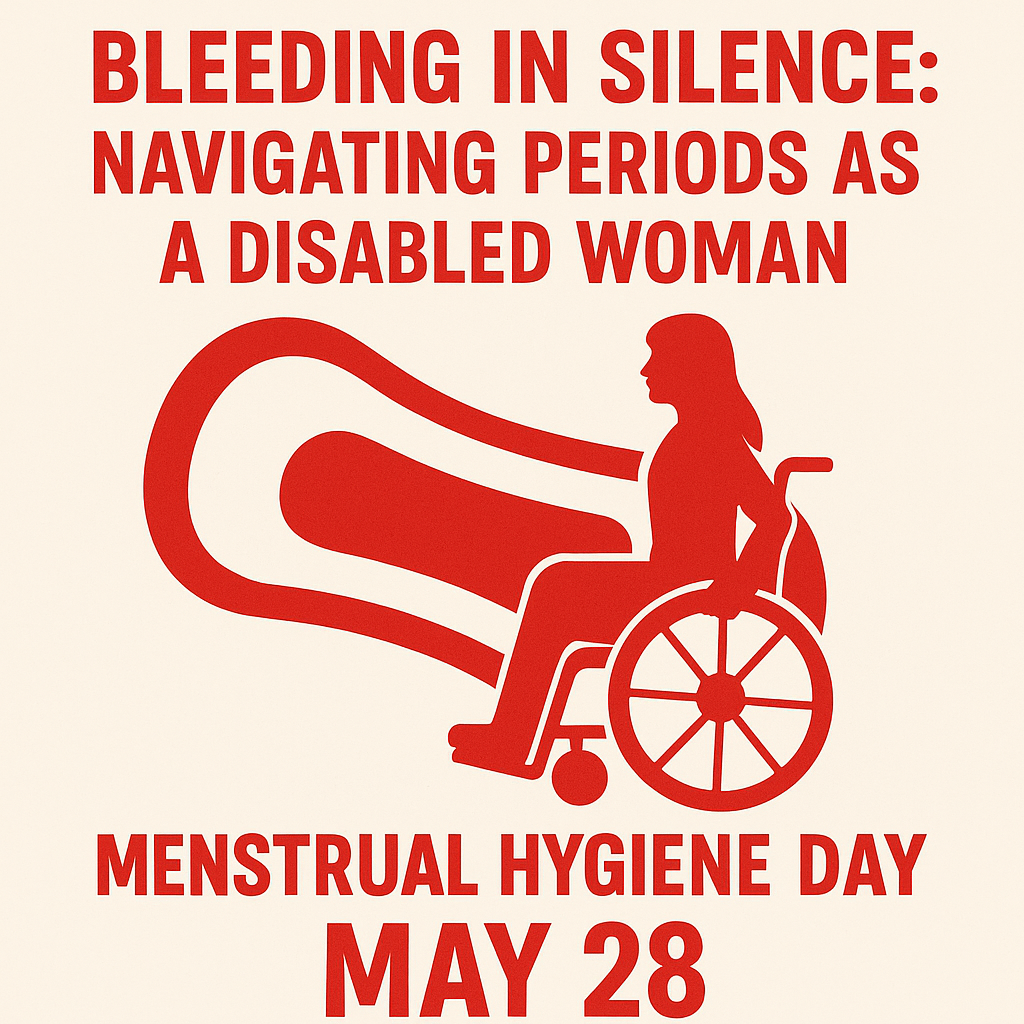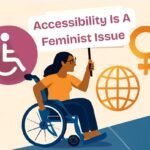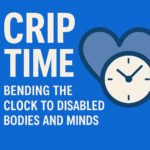I used to dread the days my period arrived. It wasn’t just the cramps or hormonal swings—it was the sheer exhaustion of navigating menstrual care in a world that didn’t seem to consider bodies like mine. As a woman with a disability, each cycle brought unique challenges that extended far beyond the bathroom.
Managing pads while dealing with mobility issues, struggling to find accessible restrooms, or needing support for something so personal—it all left me feeling vulnerable, sometimes even ashamed. Menstruation wasn’t just a private matter; it became a reminder of how often the world forgets disabled bodies in everyday design and conversation.
Though I no longer menstruate, those years shaped my understanding of just how critical it is to talk about menstrual hygiene through a disabled lens. And on Menstrual Hygiene Day, as we embrace the theme “Together for a #PeriodFriendlyWorld,” I believe it’s more important than ever to spotlight the barriers disabled menstruators continue to face—and the solutions we must work toward.
This post is for them—for us. To validate experiences, to push for accessibility, and to remind the world that inclusion starts with listening.
The Hidden Struggles of Disabled Menstruators
Menstruation is rarely easy, but when you’re disabled, it’s rarely spoken about either. During my own cycles, I encountered challenges most people never have to think twice about:
- Restroom access wasn’t just about timing—it was about whether I could physically reach, enter, and use the space independently.
- Changing pads became a complicated task when fine motor skills or body coordination didn’t cooperate.
- Pain management often overlapped or clashed with my underlying condition, compounding my discomfort.
- And perhaps the most isolating part? The silence. The fact that no one seemed to talk about how disabled people menstruate, or how different and difficult it can be.
These issues still affect millions today—people with physical, intellectual, sensory, and chronic disabilities—all of whom are expected to quietly manage their periods in spaces not designed for them.
What Makes Menstruation So Hard for Disabled People?
Let’s name the barriers—because naming them is the first step to breaking them down:
- Inaccessible toilets: Most public restrooms lack features like adult changing benches, space for mobility aids, or clean surfaces for product use.
- Dependence on caregivers: Relying on someone else to manage menstruation can strip away privacy and dignity, especially when support systems are inconsistent or under-resourced.
- Sensory sensitivities: Some disabled people find period products uncomfortable, overwhelming, or triggering, particularly those with autism or sensory processing disorders.
- Medical complexity: For many, periods worsen chronic pain, spasticity, or fatigue, making menstruation a full-body event that impacts every part of life.
- Economic barriers: Adaptive menstrual products are often more expensive and not covered by insurance or disability support services.
What Can Help: Tips and Tools for Inclusive Period Care
Based on what I’ve learned—and what I wish I’d known sooner—here are some ways to make periods more manageable for disabled menstruators:
- 🩲 Period underwear: These were a game changer. Comfortable, discreet, and less need to change during the day.
- 🛁 Washable cloth pads with easy fasteners: Better for limited hand mobility and also cost-effective.
- 📱 Cycle tracking apps with reminders: These helped me prepare in advance, especially when cognitive fatigue made it hard to keep track.
- 👥 Trusted caregivers or allies: Creating clear, respectful communication about support needs is essential, even if awkward at first.
- 🧼 Keeping a hygiene kit: Wipes, spare underwear, a disposal bag—having these ready gave me a sense of control, especially when public spaces fell short.
Pro tip: Adapt what works for you. There’s no one-size-fits-all product or approach.
We Need More Than Products—We Need Policy and Culture Change
While products help, they don’t solve the bigger problem: systemic exclusion.
A truly #PeriodFriendlyWorld would mean:
- Accessible toilets in every public space equipped for menstruation (not just labeled “disabled-friendly”).
- Free or subsidized menstrual products tailored for different bodies and abilities.
- Healthcare providers trained to talk about menstruation with disabled patients.
- Menstrual education that includes us, with disabled people featured in campaigns and school programs.
- Representation in product design—because who better to shape accessible solutions than those who live the experience?
Together for a #PeriodFriendlyWorld: Why This Matters
Menstrual Hygiene Day isn’t just a day—it’s a movement. And if we’re serious about equity, we must include disabled voices at the center of that movement.
We are not a niche issue. We are millions of menstruators around the world, managing our periods with creativity, resilience, and often, in silence. That silence needs to end.
We deserve to be heard. To be included. To bleed with dignity, support, and choice.
A Final Word (and a Gentle Ask)
Though I no longer menstruate, I carry these memories with me, not with bitterness, but with purpose. Because I know that somewhere, someone else is struggling in the same silence I once did.
So, if you’re a policymaker, a product designer, a health worker, or just someone who cares—listen to us. Design with us. Speak up for us.
And if you’re a disabled menstruator reading this: you’re not alone, and your experience is valid.
Together, let’s build a #PeriodFriendlyWorld. Not just for some, but for all.




Thank you for sharing this
Glad that you liked it!